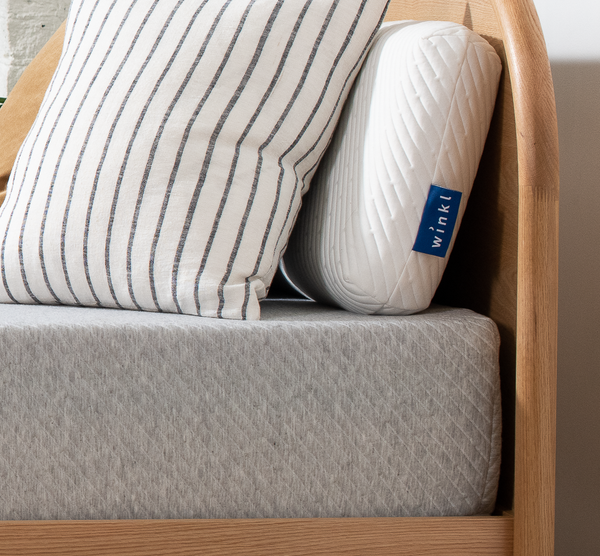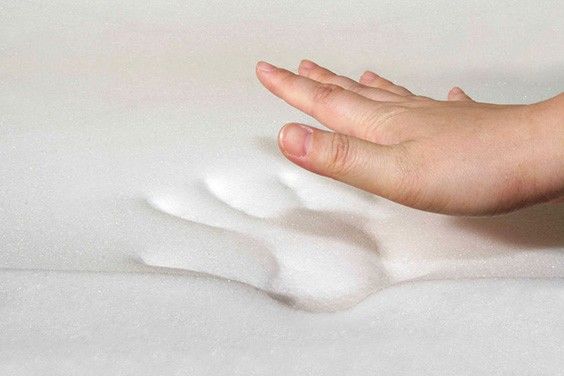Your bedroom should be a place of rest and relaxation. However, if you knew just how much dirt and bacteria were in your old pillow, you might not be able to sleep so easily. Your pillowcase needs to be cleaned often, and your pillow should be replaced more often than you think.
What makes your pillow so dirty?
Your pillow is going to absorb a lot over time with sweat being one of the most obvious culprits. Everyone perspires when they sleep, even if you don’t think that you do. All that moisture makes a perfect home for bacteria to thrive, as it’s moist and warm.
Added to that, you also shed thousands of pieces of skin which will make their way into the pillow. This, and other dirt, will attract dust mites and also fungi can also start to develop in your pillow too. There are also skin oils that will get into the linen and plenty of people also drool in their sleep. If all this is starting to sound gross, that’s because it is!
While all of this sounds terrible, it’s worth noting that we are surrounded by bacteria and skin cells all of the time. It’s the micro world we live in and perfectly healthy in low amounts. The problem comes when there is a build-up, and pillows happen to be a place where this can happen very quickly.
The importance of a pillowcase
The job of a pillowcase isn’t just to look pretty, it’s meant to act as a barrier between you and your pillow. It will preserve the life of your pillow by absorbing most of the bodily materials when you are sleeping. While it does a good job but there will still be a certain amount of sweat and bacteria that gets through to your pillow.
While it would be a good idea to wash your pillowcase after around two days, most people won’t want to go to the effort of cleaning it that often. Therefore, once a week would be fine. A good pillowcase will prevent you from having to replace your pillow frequently.
When to change your pillow
There are several signs that you need to change your pillow and you need to look out for these if you have had it for a while.
Discoloration – As you probably know, when sweat dries it does so with a yellow stain and this will only get darker over time. If you notice a build-up of permanent stains then it’s the right time to change to a fresh pillow.
Lost its shape – There are quite a few different filler materials that can be used for a pillow but if you notice any lumps or bumps that you can't correct, it’s time to change. A misshaped pillow can lead to neck pain and bad sleep.
Sleeping problems – If you notice sleeping issues that you have never had before, it could well be your pillow. This could be waking up with neck pain, constantly being tired or waking up with headaches. An old pillow could easily be the cause.
Feather issues – If you have a pillow filled with feathers you shouldn’t have to constantly fluff your pillow. Also, if you can fold your pillow in half without it expanding back out, then you need to throw it away.
Time – Different types of pillow fills have different levels of longevity but as we mentioned before, over time all those oils, skin cells and bacteria will build up. It comes to a point where even if you think the pillow is in good condition, it needs to go.
So when should I change my pillow?
As a general rule of thumb, you shouldn’t go for over two years with the same pillow. If you abide by that then you’re not going to go wrong. It could be sooner than that if you notice any of the problems above. It could be later than that depending on your pillow type, here we have a quick rundown.
Feather and Memory foam – While these are two very different types of fill, the have similar longevity of around two years. It’s worth giving them a check after around 18 months to see if there are any issues.
Down – Natural down is a fairly durable fill but it will start to lose its qualities over time. It should last for at least two years and you might get longer if it stays in good condition. Synthetic down isn’t quite as durable and you should definitely replace it after two years.
Polyester – Polyester tends to be the cheapest fill of any pillow on the market and unsurprisingly, it has the least longevity. It could be as little as 6 months when you need to replace the pillow but you should look to replace it after a year.
Buckwheat and Latex – These are two very different materials but they both have longevity on their side. The feel and comfort of them aren’t for everyone but they should both be able to last for more than 3 years without needing to be replaced.
Don’t forget to change your pillow
It’s easy to forget about changing your pillow. They lose their shape gradually and you can be forgiven for not noticing it. Also, you won’t often see the oils and sweat that is seeping into your pillow and therefore you can forget that they will be building up.
It’s therefore a good idea to make a note of when you get your pillows to be able to give them a quick inspection every now and again. Even if they look good, if you’ve had them for a number of years then it’s a good idea to change them.
Hopefully this has given you all the information that you need in order to be confident about when you need to change your pillow. It’s not an exact science but it’s best to be on the safe side. Everyone loves the feel of a new pillow and you’ll have the added benefit of it being a lot healthier for you.





